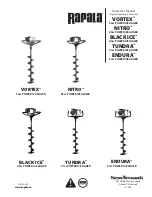
Introducing the MSQ
_______________________________________________ The Source–An Introduction to API Techniques
Flow Rate
The electrospray source can be used with flow rates from 5.0 µL/min to
2.0 mL/min.
Atmospheric Pressure Chemical Ionization
Atmospheric Pressure Chemical Ionization (APCI) is also a very soft
ionization technique and has many similarities to electrospray ionization.
Ionization takes place at atmospheric pressure and the ions are extracted into
the MS detector in the same way as in electrospray.
Similarly, as observed in ESI, [M+H]
+
and [M-H]
-
ions are usually formed
providing molecular weight information. Fragmentation can be induced in
the source by increasing the source voltage to give structural information.
Mechanism of Ion Generation
In APCI, the liquid elutes from an insert capillary, surrounded by a coaxial
flow of nitrogen nebulizing gas into a heated region. The combination of
nebulizing gas and heat form an aerosol that evaporates quickly to yield
desolvated neutral molecules (see Figure 1-12).
At the end of the probe is a corona pin held at a high potential (typically 2.0
to 3.5 kV). This produces a high-field corona discharge that causes solvent
molecules eluting into the source to be ionized. In the atmospheric pressure
region surrounding the corona pin, a series of reactions occur that give rise
to charged reagent ions. Any sample molecules, which elute and pass
through this region of reagent ions, can be ionized by the transfer of a proton
to form [M+H]
+
or [M-H]
-
. This is a form of chemical ionization; hence the
name of the technique, Atmospheric Pressure Chemical Ionization.
+
Heated nebuliser
Liquid
N
2
N
2
An aerosol
is formed
Solvent and
sample molecules
are desolvated
Solvent molecules
are ionized
Collisions and
proton transfer
Sample
[M+H]
+
ions formed
Solvent molecules
Sample molecules
Corona pin
+
+
+
+
+
+
+
+
Figure 1-12. Positive ion APCI mechanism
___________________________MSQ Hardware Manual ___________________________
1-13
















































